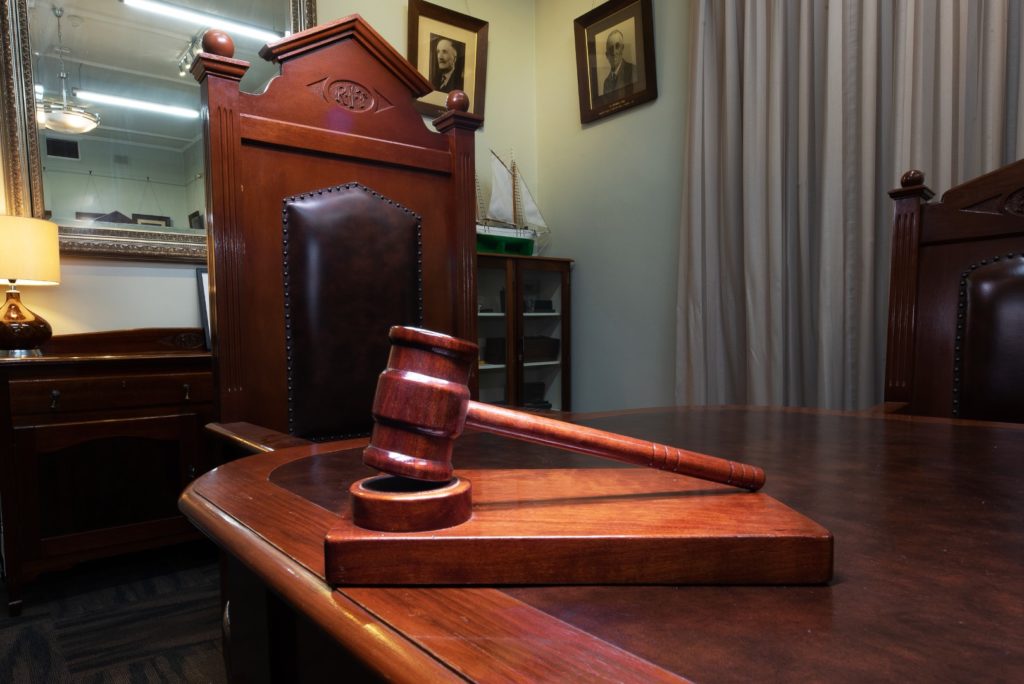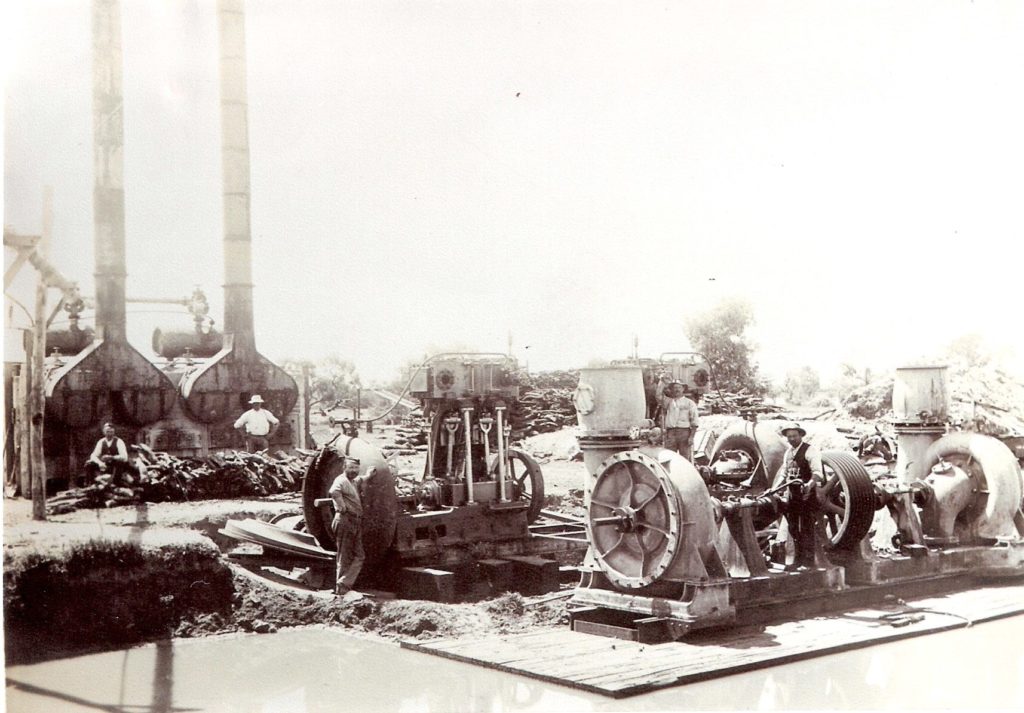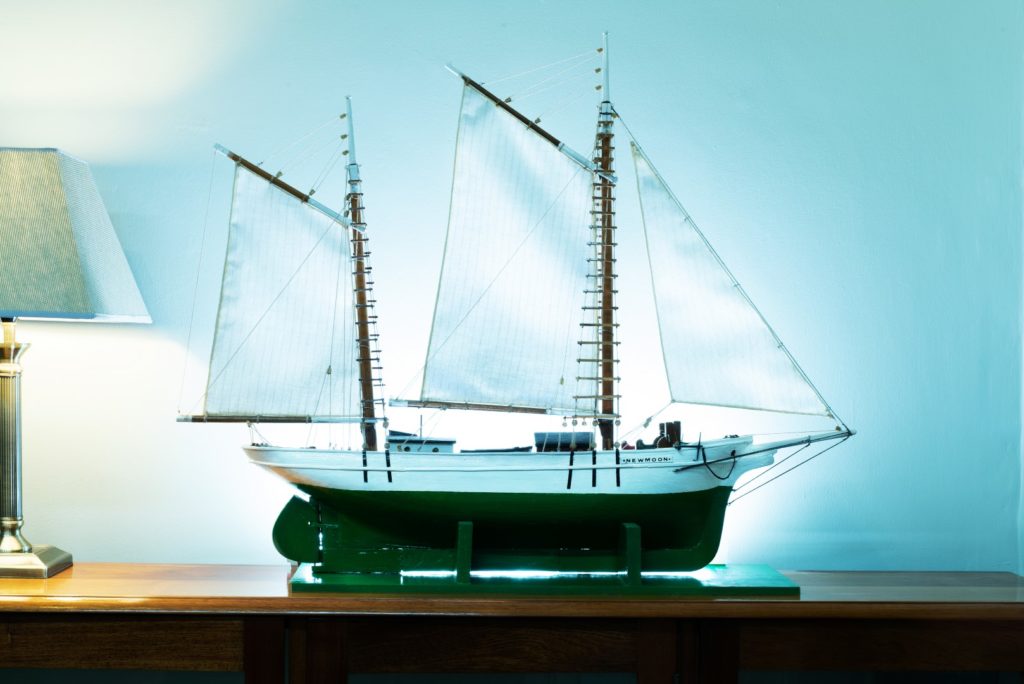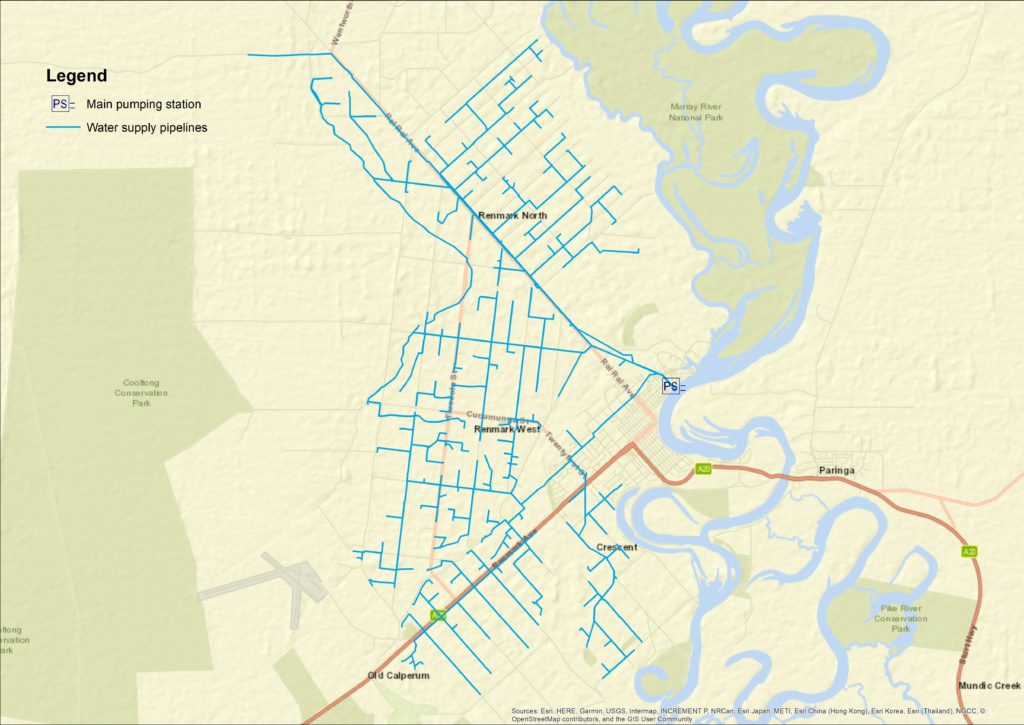The Trust celebrated its 125th birthday on 23 December 2018. To commemorate the occasion, a history book was launched by author Geoff Bull. Read about the book and find out how to purchase it here.
To peruse a compilation of history articles relating to the Trust, please visit our history articles page here.
The Renmark Irrigation Trust was formed on 23 December 1893 by an Act of the South Australian Parliament in order to enable the conditions of an agreement between the Chaffey Brothers and the state government first signed on 14 February 1887.
That agreement stipulated a grant of land by the government to the Chaffeys allocated against each £4 spent by the Chaffeys on building irrigation infrastructure within the Renmark concession.
The ownership and operating costs of the irrigation infrastructure would then pass to the settlers who bought the irrigable land. The settlers who bought the land acquired a water right and part ownership of the water supply infrastructure. The Trust structure made all irrigators who owned irrigable land ratepayers liable to pay annually for the water supply.

The Renmark Irrigation Trust is the first Irrigation Trust in South Australia and from 1893 until 1936 was named Renmark Irrigation Trust No. 1. It is one of the oldest irrigation trusts in Australia. It is overseen by a seven person board elected for a two year term from ratepayers. The first board was elected in January 1894. Since 2009 the board members have been called directors and their elected leader, the presiding member.

In 1894, at the earliest opportunity the board engaged Chaffey Brothers Ltd. to supply water to the Irrigation Trust on behalf of its members. This arrangement continued for the next two years until the bankruptcy of the Chaffeys in December 1895 following which the Trust took over the full management of the water supply.
As the Trust struggled to survive the South Australian government launched a Royal Commission into Renmark and the Village Settlements. As a consequence of the Royal Commission the Renmark Irrigation Trust No.1 was loaned money to upgrade its irrigation pumps and channels. After an initial reluctance, the Trust accepted a role as the District Council of the Renmark Irrigation Trust and was thus able to increase its revenue in order to repay the government loan. From 3 October 1900 until 30 June 1960 the Renmark Irrigation Trust was also the District Council of its irrigation district.
During the 1930s, the Renmark Irrigation Trust supplied electricity to Paringa, Lyrup, Berri, Chaffey Irrigation area, and the Loveday Internment Camp. During the war a shortage of diesel caused the Trust to revert to burning timber in order to generate power. The timber was cut by Japanese internees at Woolenook Bend and brought downstream to the Power Station by Captain Reed, using his paddle steamers and barges. A model of a Broome pearling lugger named the New Moon was constructed by some of the Japanese internees and presented to Captain Reed. The model was later presented to the Trust by Trevor Reed. In 1954 the Trust ceased to generate power and purchased it from ETSA for distribution. In 1973 it sold its power distribution network to ETSA.

The Trust manages over 140km of piping infrastructure. The pipe and pump infrastructure was recently modernised in 2015-16 with the assistance of $16.3 million from the Commonwealth Government, through the Irrigation Industry Improvement Program (3IP), to provide more efficient water supply to meet the needs of on farm irrigation technology. Part of the funding enabled the installation of real time water meter telemetry. The Renmark Irrigation Trust also manages the drainage of the irrigation district. High water tables and salinity were a long standing issue that reached a critical point following the 1956 flood. You can read more about the water delivery system here, and more about Salinity Management here.

On 20 April 2016 the Renmark Irrigation Trust became the first irrigation body in Australia to enter a partnership with the Commonwealth Environmental Water Holder to return water to parts of the environment that had suffered long term degradation by past irrigation practices. The regeneration of sections of the floodplain also involved partnerships with Nature Foundation South Australia, the Renmark Paringa Council, the Renmark to the Border Local Action Plan and local landholders.
On 12 April 2018 the Renmark Irrigation Trust became the first irrigation body in the world to be awarded gold level certification by the Alliance for Water Stewardship. The award recognised excellence in the management of water through its high standard of governance, efficient use of low cost water for its members and partnerships with community groups in environmental restoration. You can read more about Water Stewardship here.
Trust History Book
The Trust celebrated its 125th anniversary on 23 December 2018. To commemorate this occasion, local Author Geoff Bull compiled a comprehensive history book of the Trust. The book is available in Hard Cover ($60.00) or Soft Cover ($45.00). To purchase a copy, contact the Trust Main Office on (08) 8586 6911 or visit the head office at 149 Murray Avenue Renmark.
